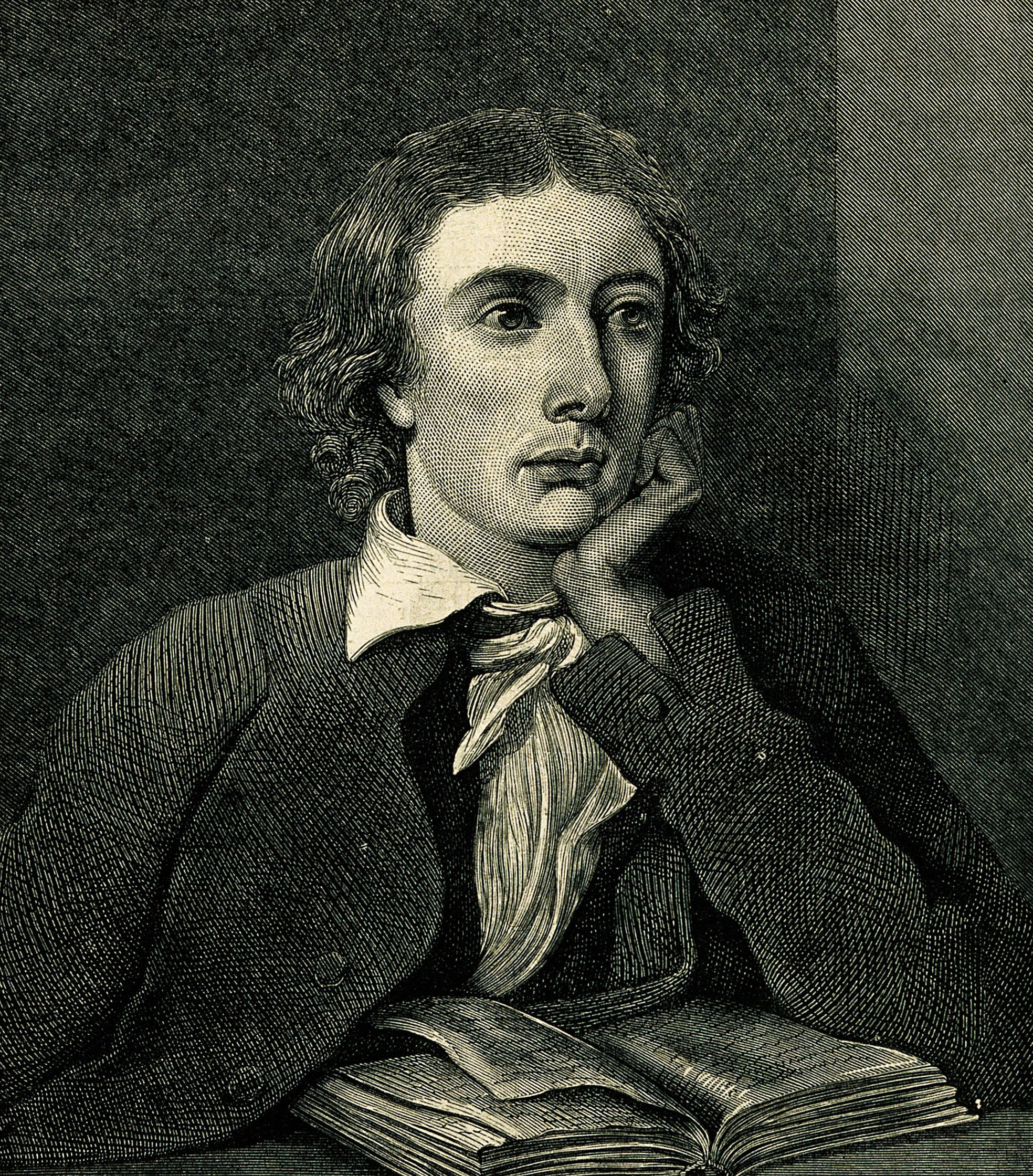Keats, << keets, >> John (1795-1821), was an English poet of the Romantic period. Keats’s poetry is concerned, in various ways, with joy in the beauty of this world, sorrow over its inevitable passing, and attempts to find bridges between the perishable world we know and the eternal world we imagine. His verse employs unusually rich and vivid images to express his intense feelings.
His life.
Keats was born in London on Oct. 31, 1795, the son of a livery stable keeper. He attended the Clarke school in Enfield, outside London, and his interest in literature was first aroused there. Keats later studied medicine and passed his medical examinations. However, he never practiced because he had decided to become a poet. He dedicated his first volume, Poems (1817), to his friend Leigh Hunt. Hunt was a journalist, essayist, and poet who held liberal political views. In 1818, Keats published his second volume of poetry, Endymion, a long mythological story in verse. The reviewers for the powerful Tory journals, always eager to attack Hunt or his friends, ridiculed Endymion. The reviewers sneeringly assigned Keats to what they called the “Cockney School of Poetry.”

The reviews ruined Keats’s reputation and even gave rise to the story that the young poet was literally killed by the hostile reception of his works. Adding to Keats’s disappointment in 1818 were the death of his brother from tuberculosis and Keats’s premonition that he himself would suffer the same fate. Keats began to develop an increasing feeling that poverty and disease would prevent his marrying Fanny Brawne, whom he deeply loved. Yet from the fall of 1818 through the fall of 1819, Keats experienced an intense burst of creativity. His final and best volume was published in 1820. But Keats had developed tuberculosis. He traveled to Italy, hoping a warmer climate might improve his health. He died in Rome on Feb. 23, 1821, and was buried there.
His work.
Keats’s early poetry was uneven. It showed the influence of Edmund Spenser and William Shakespeare, but it lacked the consistency these poets displayed. In his 1817 volume, perhaps the only poem of mature stature was the sonnet of excited literary discovery “On First Looking into Chapman’s Homer.”
In Endymion, Keats retold the classic story of the shepherd who loved and won the goddess of the moon. Some people think that Keats simply let his imagination run wild, without a clear plan, in this 4,000-line poem. Others see in the poem a symbolic story concerned, like much of Keats’s early poetry, with showing how appreciation of the beauty of nature can lead to the understanding of eternal truth. Endymion opens with the famous line “A thing of beauty is a joy for ever.”
Loading the player...Keats's Endymion
In the poetry of his final volume, Keats achieved the rich beauty and superb control of image, story, and language that has earned him lasting fame. “The Eve of St. Agnes” uses brilliant contrasts to tell a Romeo and Juliet-like tale of dangerous young love. The poem explores Keats’s favorite theme of the relationship between dreams and the everyday world. “Lamia” shows a young man entranced by love for a beautiful serpent-woman, and raises questions about the nature of reality. The unfinished “Hyperion” shows the influence of the English poet John Milton. The style of its companion fragment, “The Fall of Hyperion,” was also somewhat influenced by that of the Italian poet Dante. Together, they deal on a grand scale with the wars of the ancient gods and the principle of power in the universe. The great odes “On a Grecian Urn,” “To a Nightingale,” “On Melancholy,” and “To Autumn” present various aspects of the soul’s eternal longing in a world ruled by time. Critics still disagree about what Keats meant at the end of the Grecian Urn ode, where he interprets the message of the urn to be “Beauty is truth, truth beauty.”
Most of the poems written during Keats’s brief maturity display what he called “negative capability.” They explore many possibilities of the subjects with which they are concerned but do not insist upon any one answer to the enduring problems of life. The intense experience of life, and not its perfect understanding, was Keats’s main poetic concern.
